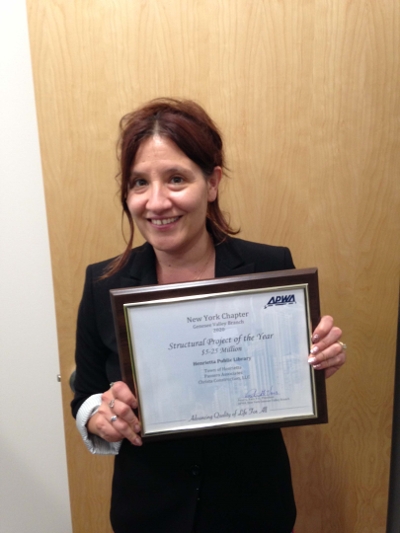About Lisa Brown's The Hospital Book, Adrienne L. Pettinelli says, "It would bring me joy to see the Caldecott committee recognize this excellent book."
When I was a young librarian, there was one clear choice to give families who were looking for books to share with children before surgery or when a beloved relative was in the hospital: Going to the Hospital by Fred Rogers. Looking at a copy now, the fashions and medical equipment in the photos are dated, but everything else about the book is outstanding. Something I didn’t notice about it back in the day is how beautifully and abundantly inclusive it is, but I always knew that it had Rogers’s recognition and honoring of children’s emotional lives: “If you’re feeling sad, or scared, or angry, it can help to tell someone you trust how you’re feeling.”
Eventually this book got so outdated that I had to stop handing it out. There were other books, but none had the je ne sais quoi of Rogers’s classic...until I picked up The Hospital Book by Lisa Brown. This is the story of a child who comes down with appendicitis and goes to the hospital for an appendectomy. There is a plot, but the story is meant to instruct children about what to expect from a hospital visit.
 Compositionally, Brown brings the appeal that’s kept Richard Scarry’s books in print for decades. Her packed spreads have forward momentum and the ideas being communicated are clear, but there are countless details to notice and enjoy in each. The difference between Brown’s book and a Scarry book is that while it’s fun in Scarry’s Cars and Trucks and Things That Go to notice that an inchworm who doesn’t have arms is driving a car, in Brown’s book, the details add meaning and give the story depth and additional relevance. On the first spread, for instance, the main character has her first stomach pain while playing with two other children. To the side, we see an abandoned game of Operation, and a copy of Madeline by Ludwig Bemelmans (a 1940 Caldecott Honor winner) lies open on the floor. Hello, foreshadowing!
Compositionally, Brown brings the appeal that’s kept Richard Scarry’s books in print for decades. Her packed spreads have forward momentum and the ideas being communicated are clear, but there are countless details to notice and enjoy in each. The difference between Brown’s book and a Scarry book is that while it’s fun in Scarry’s Cars and Trucks and Things That Go to notice that an inchworm who doesn’t have arms is driving a car, in Brown’s book, the details add meaning and give the story depth and additional relevance. On the first spread, for instance, the main character has her first stomach pain while playing with two other children. To the side, we see an abandoned game of Operation, and a copy of Madeline by Ludwig Bemelmans (a 1940 Caldecott Honor winner) lies open on the floor. Hello, foreshadowing!
Each spread also includes people of all types, a life-affirming wealth of humanity, far beyond what Brown needed for her book to be called inclusive in 2023. I have favorites: a mother wearing a sari, an ultrasound tech wearing a headscarf, a nurse sporting a half-shaved skater ‘do, and Sherlock Holmes (some details are a little random). This is the rare book in which I think all children will see something of themselves, something familiar, something that invites and welcomes them in. This is distinctive, admirable, and hard to pull off; it’s also essential for a book that seeks to be bibliotherapy for a general audience.
I also want to point out the brilliance of the cartoon style, which makes all of this seem less scary and more approachable, but Brown’s not using that to obscure the nature of the hospital experience. The main character cries (nine times!). We see her get a shot and an IV tube, we see the operating room, and we see the mask that puts her to sleep for surgery. I particularly appreciate that we see the main character vomiting after surgery, because when I was four years old and got my tonsils out, I threw up when I woke up from anesthesia and was angry at everyone who had led me to believe surgery was going to be a parade of unlimited ice cream and no big deal. (Per Fred Rogers’s advice, I spoke to everyone in the vicinity about my displeasure at the time, and here I am telling you about it, forty-six years later.) I’m not in favor of misleading kids about important things, and I commend Brown for being honest without being frightening.
My favorite bullet point in the Caldecott criteria is that committee members need to consider: “Excellence of pictorial interpretation of story, theme, or concept; of appropriateness of style of illustration to the story, theme or concept; of delineation of plot, theme, characters, setting mood or information through the pictures.” The Hospital Book is a master class in all of this, and it’s all done with a light touch and sense of playfulness. Brown hasn’t tried to create The Great American Picture Book. She’s made a picture book that is perfectly itself and perfectly useful, and she could have sold as many copies of a book half as thoughtful and skillfully executed as this one is. It would bring me joy to see the Caldecott committee recognize this excellent book.
[Read The Horn Book Magazine review of The Hospital Book]

ALREADY A SUBSCRIBER? LOG IN
We are currently offering this content for free. Sign up now to activate your personal profile, where you can save articles for future viewing.








Add Comment :-
Comment Policy:
Comment should not be empty !!!